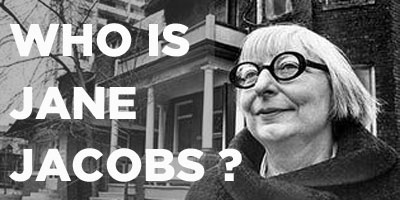BLOG

5M | Who is Jane Jacobs? This November marked the 50th anniversary of the publication of Jane Jacobs' seminal work, The Death and Life of Great American Cities. In this book, Jacob's describes the essential qualities make a city come alive - from more evident effects of mixed uses and density of activity, to the indirect influences of the use of sidewalks, the scale of blocks, repurposing of old buildings, and the idea of "eyes-on-the-street." Why are her ideas still relevant over fifty years later? Especially to the 5M Project...
The concepts of mixed-use, moderately dense, walkable urban environments are widely embraced by urban planners and architects. Yet possibly, it's exactly because she was neither one of these that makes her ideas so enduring. Possibly, because she was a housewife, a writer and editor, she could observe the way people interact with their environments instead of focusing on aesthetic qualities or functional purposes. And the way people interact with their environments is timeless, regardless of the tendencies of any given era.
Jacob's ideas challenged those of Robert Moses and the other planners of her time who, she criticized, designed cities for cars and utopian visions instead of people and real-life experiences.
Anthony Flint, author of Wrestling with Moses: How Jane Jacobs took on New York's Master Builder and Transformed the American City writes in a post on Grist commemorating Life and Death's 50th anniversary that Jacob disrupted the status quo by giving the power to the people. She did indeed, in two ways. She advocated that projects be designed to optimize the people's experience rather than the portfolio of the designer; and she instigated a process that involves the input and voice of the public throughout the development.
Fifty years later, Flint argues, NIMBY's - those who say, "not in my backyard" - can dominate the agenda and counteract the intention of public involvement. The 21st century city, Flint proposes, could maybe use a touch of Moses - thinking big at least in some respects, he says.
Yet here in Flint's proposal, Jane Jacob's essential message remains. A sensible, humanistic, approach to city design will be the 21st century city - as it will be for timeless ages to come.
written by Robin Waldroup | Community Engagement, 5M Team


